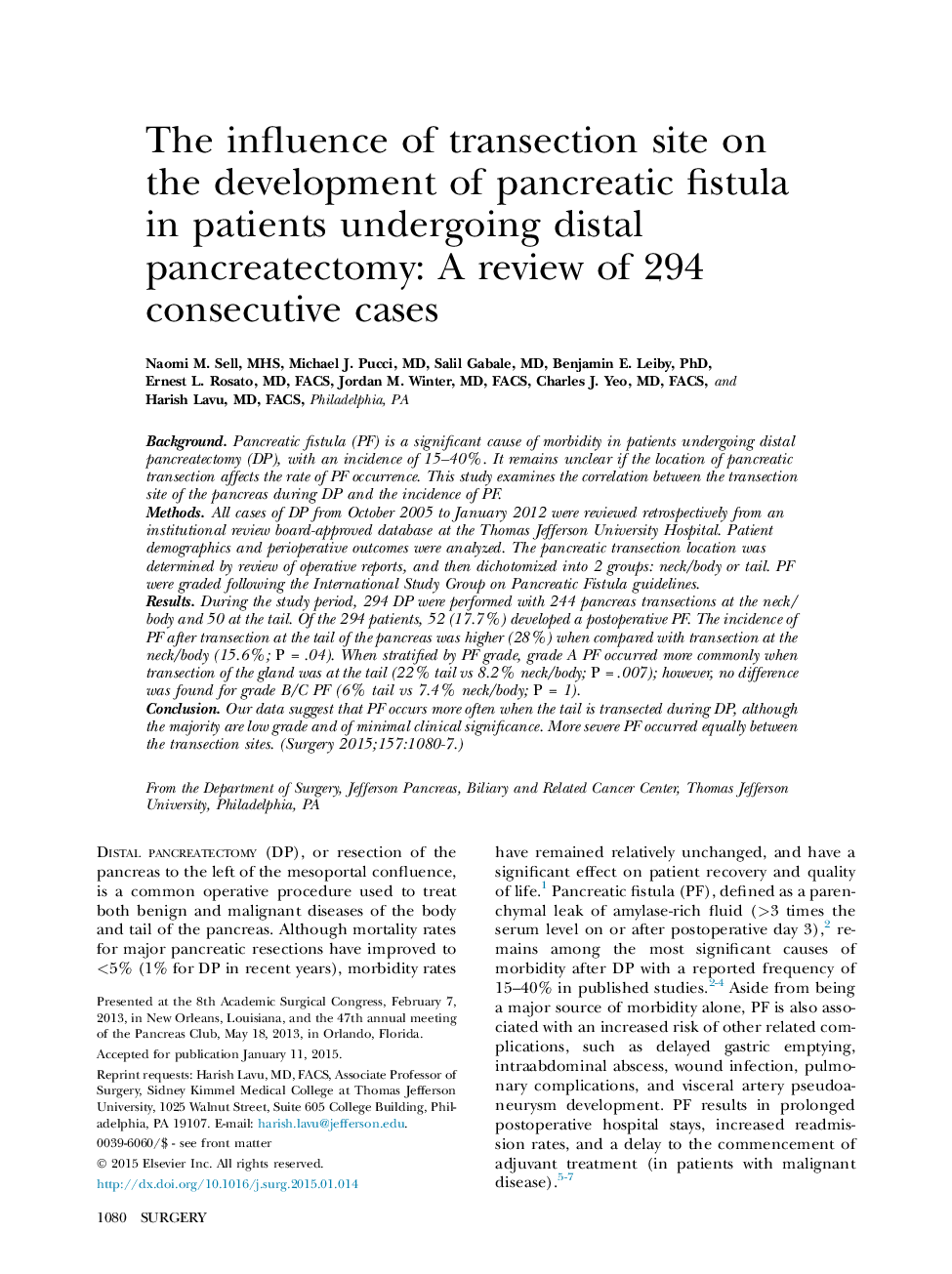| Article ID | Journal | Published Year | Pages | File Type |
|---|---|---|---|---|
| 6255151 | Surgery | 2015 | 8 Pages |
BackgroundPancreatic fistula (PF) is a significant cause of morbidity in patients undergoing distal pancreatectomy (DP), with an incidence of 15-40%. It remains unclear if the location of pancreatic transection affects the rate of PF occurrence. This study examines the correlation between the transection site of the pancreas during DP and the incidence of PF.MethodsAll cases of DP from October 2005 to January 2012 were reviewed retrospectively from an institutional review board-approved database at the Thomas Jefferson University Hospital. Patient demographics and perioperative outcomes were analyzed. The pancreatic transection location was determined by review of operative reports, and then dichotomized into 2 groups: neck/body or tail. PF were graded following the International Study Group on Pancreatic Fistula guidelines.ResultsDuring the study period, 294 DP were performed with 244 pancreas transections at the neck/body and 50 at the tail. Of the 294 patients, 52 (17.7%) developed a postoperative PF. The incidence of PF after transection at the tail of the pancreas was higher (28%) when compared with transection at the neck/body (15.6%; PÂ =Â .04). When stratified by PF grade, grade AÂ PF occurred more commonly when transection of the gland was at the tail (22% tail vs 8.2% neck/body; PÂ =Â .007); however, no difference was found for grade B/C PF (6% tail vs 7.4% neck/body; PÂ =Â 1).ConclusionOur data suggest that PF occurs more often when the tail is transected during DP, although the majority are low grade and of minimal clinical significance. More severe PF occurred equally between the transection sites.
